
Athens Shore Excursion: Private City Tour and Cape Sounion Trip
6h30
Private
About this activity
Itinerary
This is a typical itinerary for this product
Pass By: Temple of Olympian Zeus, Leoforos Vasilissis Olgas Leoforos Amalias, Athens 105 57 Greece
The Temple of Olympian Zeus, also known as the Olympieion or Columns of the Olympian Zeus, is a former colossal temple at the center of the Greece capital Athens. It was dedicated to "Olympian" Zeus, a name originating from his position as head of the Olympian gods. Construction began in the 6th century BC during the rule of the Athenian tyrants, who envisaged building the greatest temple in the ancient world, but it was not completed until the reign of the Roman Emperor Hadrian in the 2nd century AD, some 638 years after the project had begun. During the Roman period the temple -that included 104 colossal columns- was renowned as the largest temple in Greece and housed one of the largest cult statues in the ancient world.
Pass By: The Academy of Athens, 28 Panepistimiou Avenue, Athens 106 79 Greece
The Academy of Athens is Greece's national academy, and the highest research establishment in the country. It was established in 1926, and operates under the supervision of the Ministry of Education. The Academy's main building is one of the major landmarks of Athens.
Pass By: National and Kapodistrian University of Athens, Panepistimiou 30, Athens 106 79 Greece
The University of Athens was founded on May 3, 1837, by King Otto of Greece (in Greek, Othon) and was named in his honour Othonian University. It was the first university in the liberated Greek state and in the surrounding area of Southeast Europe as well. It was also the second academic institution after the Ionian Academy. This fledgling university consisted of four faculties; Theology, Law, Medicine and Arts (which included applied sciences and mathematics). During its first year of operation, the institution was staffed by 33 professors, while courses were attended by 52 students and 75 non-matriculated "auditors".
It was first housed in the residence of architects Stamatios Kleanthis and Eduard Schaubert, on the north slope of the Acropolis, in Plaka, which now houses the Museum of the University. In November 1841 the university relocated on the Central Building of the University of Athens, a building designed by Danish architect Christian Hansen. He followed a neoclassical approach, "combining the monument's magnificence with a human scale simplicity" and gave the building its H-shape. The building was decorated by painter Carl Rahl, forming the famous "architectural trilogy of Athens", together with the building of the National Library of Greece (left of the university) and the building of the Athens Academy (right of the university). Construction began in 1839 in a location to the north of the Acropolis. Its front wing, also known as the Propylaea, was completed in 1842–1843. The rest of the wings' construction, that was supervised at first by Greek architect Lysandros Kaftantzoglou and later by his colleague Anastasios Theofilas, was completed in 1864. The building is nowadays part of what is called the "Athenian Neoclassical Trilogy"
Pass By: Arch of Hadrian (Pili tou Adrianou), Leoforos Amalias, Athens Greece
The Arch of Hadrian, most commonly known in Greek as Hadrian's Gate, is a monumental gateway resembling – in some respects – a Roman triumphal arch. It spanned an ancient road from the center of Athens, Greece, to the complex of structures on the eastern side of the city that included the Temple of Olympian Zeus. It has been proposed that the arch was built to celebrate the adventus (arrival) of the Roman Emperor Hadrian and to honor him for his many benefactions to the city, on the occasion of the dedication of the nearby temple complex in 131 or 132 AD.[1] It is not certain who commissioned the arch, although it is probable that the citizens of Athens or another Greek group were responsible for its construction and design. There were two inscriptions on the arch, facing in opposite directions, naming both Theseus and Hadrian as founders of Athens. While it is clear that the inscriptions honor Hadrian, it is uncertain whether they refer to the city as a whole or to the city in two parts: one old and one new. The early idea, however, that the arch marked the line of the ancient city wall, and thus the division between the old and the new regions of the city, has been shown to be false by further excavation.
Pass By: Tomb of the Unknown Soldier, Leoforos Vasilissis Amalias Syntagma Square, Athens 100 28 Greece
The Tomb of the Unknown Soldier is a war memorial located in Syntagma Square in Athens, in front of the Old Royal Palace. It is a cenotaph dedicated to the Greek soldiers killed during war. It was sculpted between 1930 and 1932 by sculptor Fokion Rok.
The tomb is guarded by the Evzones of the Presidential Guard.
Stop At: Panathenaic Stadium, Vassileos Konstantinou Avenue Vassileos Konstantinou Avenue, 999-20, Athens 999-20 Greece
The Panathenaic Stadium or Kallimarmaro ( [kaliˈmarmaro], meaning "beautiful marble") is a multi-purpose stadium in Athens, Greece. One of the main historic attractions of Athens,it is the only stadium in the world built entirely of marble.
A stadium was built on the site of a simple racecourse by the Athenian statesman Lykourgos (Lycurgus) c. 330 BC, primarily for the Panathenaic Games. It was rebuilt in marble by Herodes Atticus, an Athenian Roman senator, by 144 AD and had a capacity of 50,000 seats. After the rise of Christianity in the 4th century it was largely abandoned. The stadium was excavated in 1869 and hosted the Zappas Olympics in 1870 and 1875. After being refurbished, it hosted the opening and closing ceremonies of the first modern Olympics in 1896 and was the venue for 4 of the 9 contested sports. It was used for various purposes in the 20th century and was once again used as an Olympic venue in 2004. It is the finishing point for the annual Athens Classic Marathon.It is also the last venue in Greece from where the Olympic flame handover ceremony to the host nation takes place.
Duration: 15 minutes
Stop At: Temple of Poseidon, Leoforos Athinon - Souniou Cape Sounio, Sounio 195 00 Greece
The temple of Poseidon is the main attraction of this tour.The original, Archaic-period temple of Poseidon on the site, which was built of tufa, was probably destroyed in 480 BC by Persian troops during Xerxes I's invasion of Greece. Although there is no direct evidence for Sounion, Xerxes certainly had the temple of Athena and everything else on the Acropolis of Athens, razed as punishment for the Athenians' defiance.After they defeated Xerxes in the naval Battle of Salamis, the Athenians placed an entire captured enemy trireme (warship with three banks of oars) at Sounion as a trophy dedicated to Poseidon.
The temple of Poseidon at Sounion was constructed in 444–440 BC. This was during the ascendancy of the Athenian statesman Pericles, who also rebuilt the Parthenon in Athens. It was built on the ruins of a temple dating from the Archaic period.
In close distance to the temple there is a coffee and snacks place where you can buy your refreshments and snacks after the tour.
Duration: 1 hour 30 minutes
Pass By: Achtypis Private Tours, 4 28th October Street, Pyrgos 271 31 Greece
.
Read more
Show less
This is a typical itinerary for this product
Pass By: Temple of Olympian Zeus, Leoforos Vasilissis Olgas Leoforos Amalias, Athens 105 57 Greece
The Temple of Olympian Zeus, also known as the Olympieion or Columns of the Olympian Zeus, is a former colossal temple at the center of the Greece capital Athens. It was dedicated to "Olympian" Zeus, a name originating from his position as head of the Olympian gods. Construction began in the 6th century BC during the rule of the Athenian tyrants, who envisaged building the greatest temple in the ancient world, but it was not completed until the reign of the Roman Emperor Hadrian in the 2nd century AD, some 638 years after the project had begun. During the Roman period the temple -that included 104 colossal columns- was renowned as the largest temple in Greece and housed one of the largest cult statues in the ancient world.
Pass By: The Academy of Athens, 28 Panepistimiou Avenue, Athens 106 79 Greece
The Academy of Athens is Greece's national academy, and the highest research establishment in the country. It was established in 1926, and operates under the supervision of the Ministry of Education. The Academy's main building is one of the major landmarks of Athens.
Pass By: National and Kapodistrian University of Athens, Panepistimiou 30, Athens 106 79 Greece
The University of Athens was founded on May 3, 1837, by King Otto of Greece (in Greek, Othon) and was named in his honour Othonian University. It was the first university in the liberated Greek state and in the surrounding area of Southeast Europe as well. It was also the second academic institution after the Ionian Academy. This fledgling university consisted of four faculties; Theology, Law, Medicine and Arts (which included applied sciences and mathematics). During its first year of operation, the institution was staffed by 33 professors, while courses were attended by 52 students and 75 non-matriculated "auditors".
It was first housed in the residence of architects Stamatios Kleanthis and Eduard Schaubert, on the north slope of the Acropolis, in Plaka, which now houses the Museum of the University. In November 1841 the university relocated on the Central Building of the University of Athens, a building designed by Danish architect Christian Hansen. He followed a neoclassical approach, "combining the monument's magnificence with a human scale simplicity" and gave the building its H-shape. The building was decorated by painter Carl Rahl, forming the famous "architectural trilogy of Athens", together with the building of the National Library of Greece (left of the university) and the building of the Athens Academy (right of the university). Construction began in 1839 in a location to the north of the Acropolis. Its front wing, also known as the Propylaea, was completed in 1842–1843. The rest of the wings' construction, that was supervised at first by Greek architect Lysandros Kaftantzoglou and later by his colleague Anastasios Theofilas, was completed in 1864. The building is nowadays part of what is called the "Athenian Neoclassical Trilogy"
Pass By: Arch of Hadrian (Pili tou Adrianou), Leoforos Amalias, Athens Greece
The Arch of Hadrian, most commonly known in Greek as Hadrian's Gate, is a monumental gateway resembling – in some respects – a Roman triumphal arch. It spanned an ancient road from the center of Athens, Greece, to the complex of structures on the eastern side of the city that included the Temple of Olympian Zeus. It has been proposed that the arch was built to celebrate the adventus (arrival) of the Roman Emperor Hadrian and to honor him for his many benefactions to the city, on the occasion of the dedication of the nearby temple complex in 131 or 132 AD.[1] It is not certain who commissioned the arch, although it is probable that the citizens of Athens or another Greek group were responsible for its construction and design. There were two inscriptions on the arch, facing in opposite directions, naming both Theseus and Hadrian as founders of Athens. While it is clear that the inscriptions honor Hadrian, it is uncertain whether they refer to the city as a whole or to the city in two parts: one old and one new. The early idea, however, that the arch marked the line of the ancient city wall, and thus the division between the old and the new regions of the city, has been shown to be false by further excavation.
Pass By: Tomb of the Unknown Soldier, Leoforos Vasilissis Amalias Syntagma Square, Athens 100 28 Greece
The Tomb of the Unknown Soldier is a war memorial located in Syntagma Square in Athens, in front of the Old Royal Palace. It is a cenotaph dedicated to the Greek soldiers killed during war. It was sculpted between 1930 and 1932 by sculptor Fokion Rok.
The tomb is guarded by the Evzones of the Presidential Guard.
Stop At: Panathenaic Stadium, Vassileos Konstantinou Avenue Vassileos Konstantinou Avenue, 999-20, Athens 999-20 Greece
The Panathenaic Stadium or Kallimarmaro ( [kaliˈmarmaro], meaning "beautiful marble") is a multi-purpose stadium in Athens, Greece. One of the main historic attractions of Athens,it is the only stadium in the world built entirely of marble.
A stadium was built on the site of a simple racecourse by the Athenian statesman Lykourgos (Lycurgus) c. 330 BC, primarily for the Panathenaic Games. It was rebuilt in marble by Herodes Atticus, an Athenian Roman senator, by 144 AD and had a capacity of 50,000 seats. After the rise of Christianity in the 4th century it was largely abandoned. The stadium was excavated in 1869 and hosted the Zappas Olympics in 1870 and 1875. After being refurbished, it hosted the opening and closing ceremonies of the first modern Olympics in 1896 and was the venue for 4 of the 9 contested sports. It was used for various purposes in the 20th century and was once again used as an Olympic venue in 2004. It is the finishing point for the annual Athens Classic Marathon.It is also the last venue in Greece from where the Olympic flame handover ceremony to the host nation takes place.
Duration: 15 minutes
Stop At: Temple of Poseidon, Leoforos Athinon - Souniou Cape Sounio, Sounio 195 00 Greece
The temple of Poseidon is the main attraction of this tour.The original, Archaic-period temple of Poseidon on the site, which was built of tufa, was probably destroyed in 480 BC by Persian troops during Xerxes I's invasion of Greece. Although there is no direct evidence for Sounion, Xerxes certainly had the temple of Athena and everything else on the Acropolis of Athens, razed as punishment for the Athenians' defiance.After they defeated Xerxes in the naval Battle of Salamis, the Athenians placed an entire captured enemy trireme (warship with three banks of oars) at Sounion as a trophy dedicated to Poseidon.
The temple of Poseidon at Sounion was constructed in 444–440 BC. This was during the ascendancy of the Athenian statesman Pericles, who also rebuilt the Parthenon in Athens. It was built on the ruins of a temple dating from the Archaic period.
In close distance to the temple there is a coffee and snacks place where you can buy your refreshments and snacks after the tour.
Duration: 1 hour 30 minutes
Pass By: Achtypis Private Tours, 4 28th October Street, Pyrgos 271 31 Greece
.
Included
- Port pickup and drop-off
- Professional guide
- Transport by private minivan
- Worry-Free Shore Excursion Guarantee
Not included
- Gratuities
- Food and drinks
- Entrance fees to the Temple of Poseidon (8 euros)
- Entry/Admission - Temple of Poseidon
Additional
- Confirmation will be received at time of booking, unless booked within 5 days of travel. In this case confirmation will be received within 48 hours, subject to availability
- Travelers should have a moderate physical fitness level
- At time of booking, cruise ship passengers must provide the following details under Special Requirements: Ship name, docking time, disembarkation time and re-boarding time
- Please also enter your preferred pickup time in the Special Requirements box at the time of booking, and reconfirm 48 hours prior to the tour’s departure time
- This is a private tour/activity. Only your group will participate
Features
Tourism
100%
Cultural
65%
Aquatic
35%
Reviews
Collections
This experience is part of these collections
You may also like









 See all 27 Collections
See all 27 Collections
Click to discover other experiences
See all
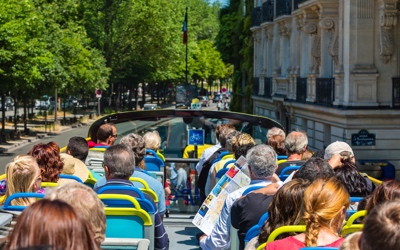
Collections
Hop-on Hop-off & bus
21 Activities
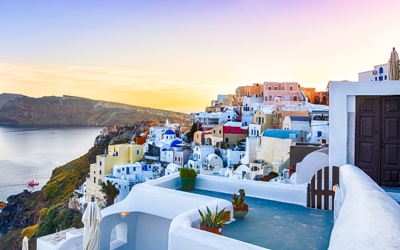
Collections
Other trips
61 Activities
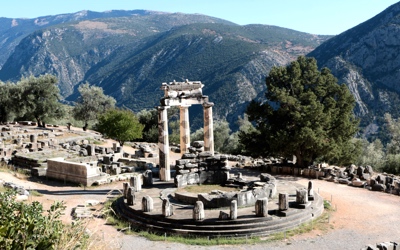
Collections
Delphi trip
47 Activities

Collections
Sports
8 Activities

Collections
Meteora trip
32 Activities
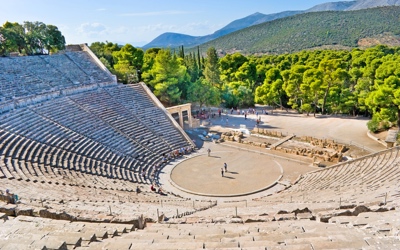
Collections
Mycenae-Epidaurus
35 Activities

Collections
Boat cruise
26 Activities

Collections
Food tasting
68 Activities

Collections
Walking tour
74 Activities
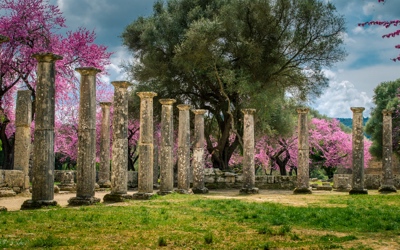
Collections
Olympia trip
22 Activities







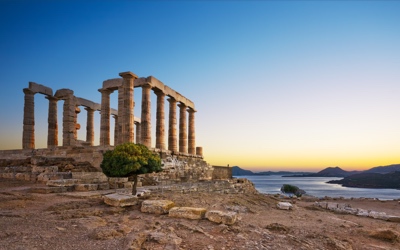

Our guide went out of the way to cover everything.. Great tour!